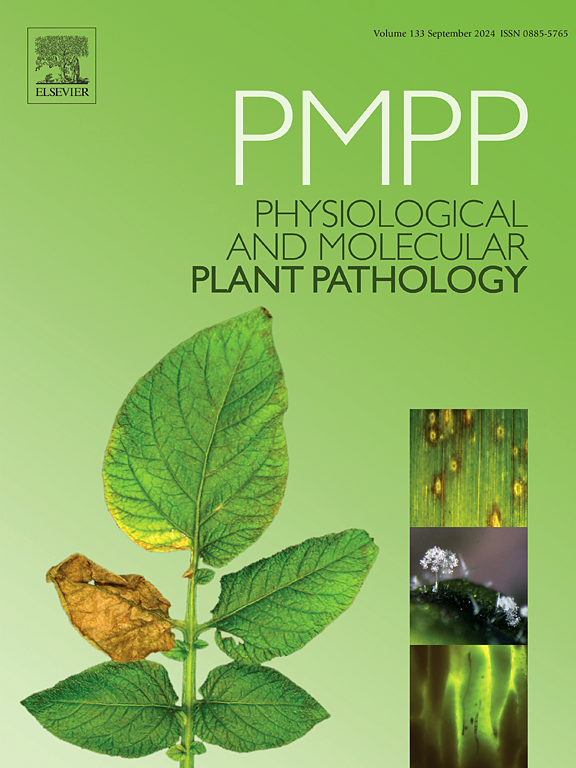Molecular detection and multigene characterization of phytoplasmas in mixed infection with begomovirus and its associated DNA satellites in Malabar neem and development of multiplex PCR and LAMP assays
IF 2.8
3区 农林科学
Q2 PLANT SCIENCES
引用次数: 0
Abstract
The present study reports the mixed infections of phytoplasmas and begomovirus in Melia dubia. A total of 38 symptomatic samples of plants exhibiting mosaic, leaf curl, and stunted growth, indicative of phytoplasma and begomovirus infections, were collected from 13 locations across Karnataka, India. The presence of phytoplasmas was confirmed through 16S rRNA gene amplification, using universal primer pair P1/P7 followed by nested PCR using primer R16F2n/R16R2. Further, in-silico RFLP analysis of the amplified F2n/R2 region of the 16S rRNA gene classified the strains associated with M. dubia as 'Candidatus Phytoplasma asteris' group and subgroups 16SrI-B and 16SrI-X. Median-joining network analysis revealed significant genetic diversity within ‘Ca. P. asteris’ strains from across different locations, with the identification of seven distinct lineage groups. Using specific primers, begomovirus and its associated DNA betasatellites were detected, confirming the presence of chilli leaf curl virus and tomato leaf curl Bangladesh betasatellite isolate in M. dubia. Recombination and GC plot analyses revealed genetic exchanges and variations in GC content within the viral genome, providing insights into its adaptability and pathogenicity. This is the first report of mixed infection involving ‘Ca. P. asteris’ (16SrI), begomovirus and its associated satellite virus in M. dubia in India. The multiplex PCR and LAMP assays developed in this study were successfully used to detect 'Ca. P. asteris' and begomovirus in M. dubia. These assays have the potential to serve as reliable and efficient diagnostic tools for early pathogen detection, which may aid in the timely implementation of disease management strategies and contribute to the effective control of phytoplasma and begomovirus infections in Melia dubia.

求助全文
约1分钟内获得全文
求助全文
来源期刊
CiteScore
4.30
自引率
7.40%
发文量
130
审稿时长
38 days
期刊介绍:
Physiological and Molecular Plant Pathology provides an International forum for original research papers, reviews, and commentaries on all aspects of the molecular biology, biochemistry, physiology, histology and cytology, genetics and evolution of plant-microbe interactions.
Papers on all kinds of infective pathogen, including viruses, prokaryotes, fungi, and nematodes, as well as mutualistic organisms such as Rhizobium and mycorrhyzal fungi, are acceptable as long as they have a bearing on the interaction between pathogen and plant.

 求助内容:
求助内容: 应助结果提醒方式:
应助结果提醒方式:


